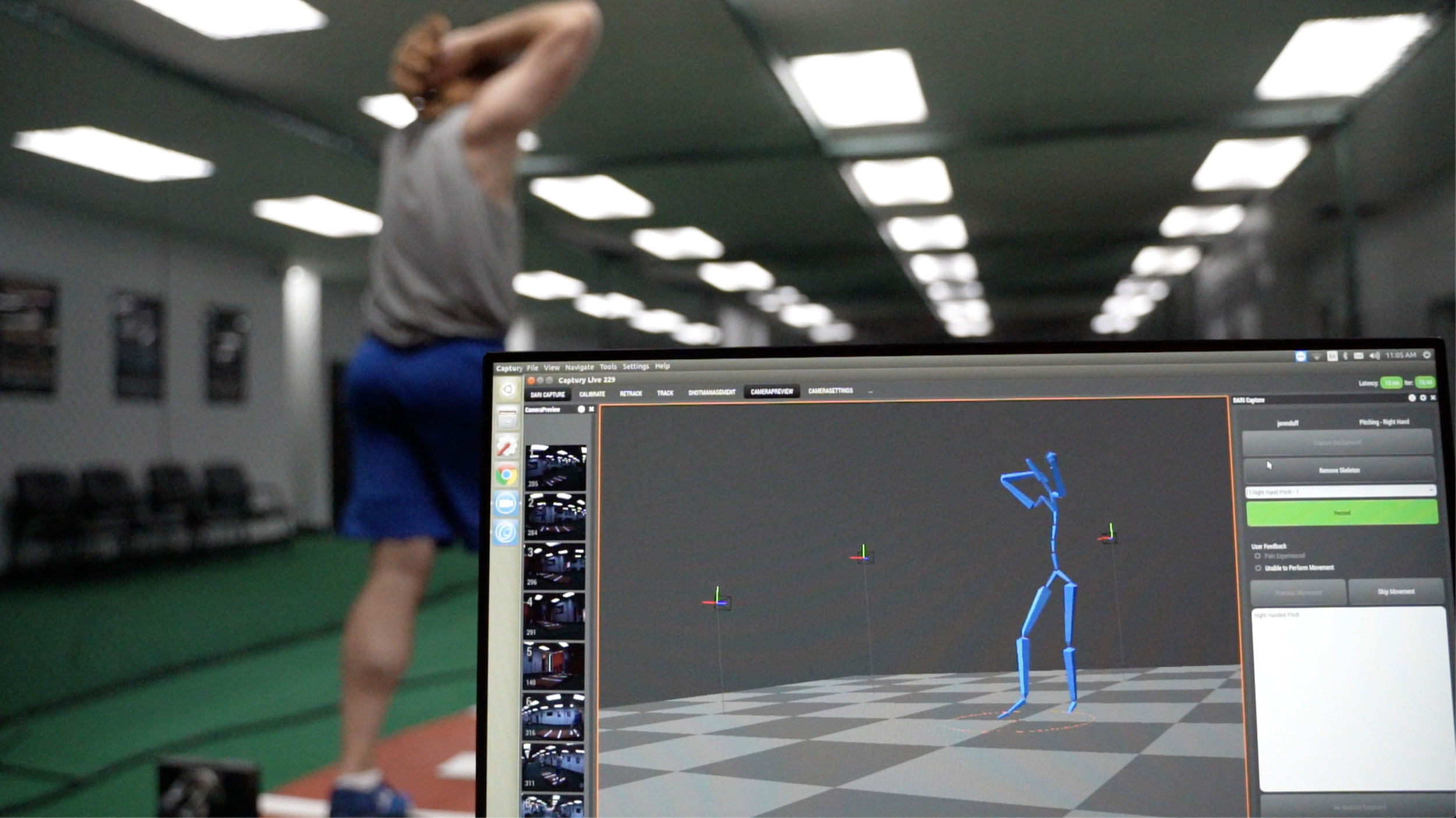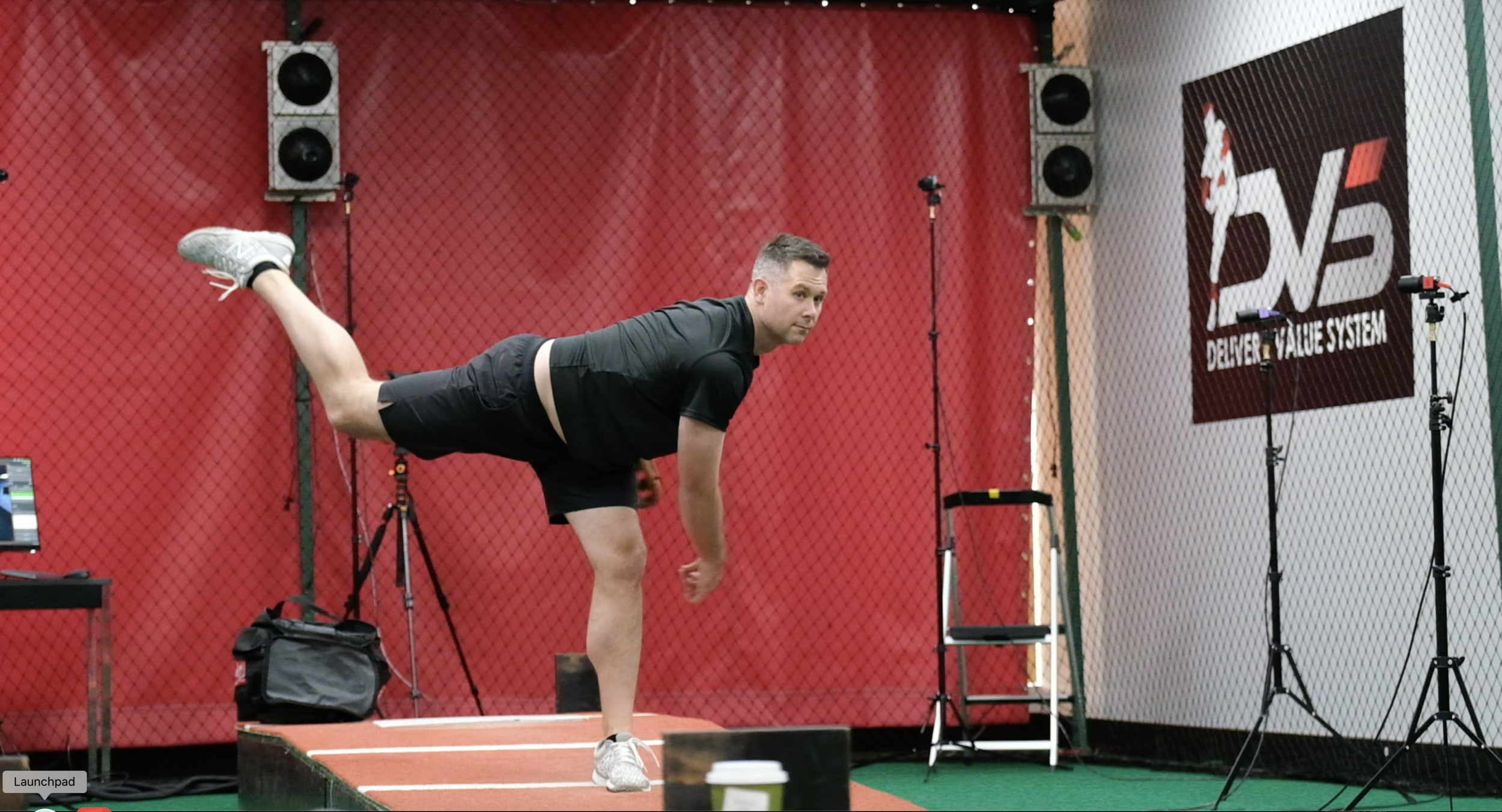
What’s Your Score?
DVS Baseball offers a proprietary bio-mechananical analysis that provides insight into injury risk, performance potential, and in-game success.
The Importance of Sequencing
How much of a role does the sequence of the pitching delivery impact performance? A significant role! Improving the sequence of your pitching delivery can be the fastest and most sustainable path to improved performance. However, as Justin Orenduff and Dr. Gary Gray will discuss, you have to be willing to look in the mirror "come down from the mountaintop, go down in the valley, and make the necessary skill enhancements to reach a new mountaintop.
The Delivery Value System
The Delivery Value System is the biomechanics model used by DVS Baseball to analyze baseball pitchers. The model objectively evaluates the sequence of a pitcher’s delivery using manual marker less motion capture. The Delivery Value System consists of six components of sequencing in the delivery which are summed into an overall score; the DVS Score
Pitchers can get a DVS Score by visiting one of our in-person Development Centers or purchasing through our website, or purchasing through the DVS Baseball M.V.P. App. If you would like to get your initial DVS Score and learn more about the role your pitching delivery currently plays on your health, performance, and success, click the link below.

Medically Published Research
Our research Predicting Injury in Professional Baseball Pitchers From Delivery Mechanics: A Statistical Model Using Quantitative Video Analysis was published in November 2017 in Orthopedics Medical Journal.
THE DVS SCORE
We have compiled years of research and data collection into a single quantifiable number referred to as a DVS Score. The DVS Score of a pitcher objectively evaluates the movements of a pitcher’s delivery to remove any bias towards a specific methodology or style. The movements are broken down into six main components and over 30 sub-components of the pitching delivery, which are examined and measured across multiple angles to calculate accurate scoring.
Each component consists of a proprietary measurements to quantify a movement. As our research continues to evolve, the components of the DVS Scoring System are constantly being measured in a variety of studies to find correlations between a pitcher’s mechanics, injury risk and performance potential.
A DVS Score of a pitcher ranges from 0 to 24. As a pitcher's DVS Score increases, his risk of injury decreases.
A DVS Score not only gives a pitcher insight into injury risk, but when looking at the specific component scores of a pitcher, the entire risk profile is determined.
Two pitchers may have the exact same overall DVS Score, but may have entirely different risk profiles. For instance, for every component score increase in Mass & Momentum, a pitcher decreases their chance of injury by 17.5%.
A centerfield view and side view are used to as part of the scoring system. Both views must meet certain criteria in order to accurately score a pitcher.
Multiple pitches in sequence at high intensity are used to determine a DVS Score.
Each year, the Scoring System is used to score each pitcher in Major League Baseball.
The objectivity of a pitcher’s DVS Score allows DVS Baseball to build multiple studies and correlations across large sample sizes.
DVS Scoring Components
Mass & Momentum
The positioning of the lower extremity as the front foot crosses the lead hip while the body moves down the mound.
Arm Swing
The path of the throwing arm as it travels out of the glove to the point where the throwing hand extends above the throwing elbow
Posture
Relates to the positioning of the head and trunk as the body moves toward the target, before the front foot contacts ground.
Position at Foot Strike
The positioning of the upper and lower extremities as the front foot makes firm contact with the ground.
Path of Arm Acceleration
Refers to the path of the ball between the late cocking phase of throwing (maximal shoulder external rotation) and ball release.
Finish
The transition of the pitcher’s body following release into a balanced follow-through position.
Improve Your DVS Score
This illustration is an example of how we quantify the value of improving a pitcher's delivery sequence (DVS Score). Having a pitcher understand their current level of sequencing and, more importantly, how to improve their level of sequencing can provide a clear path of development.
We can help pitchers associate improvements in their DVS Score to injury risk and velocity in all of our pitching evaluations while achieving in-game success.
Our injury risk correlations are built of our IR Model, which accounts for a MLB pitcher's injury history using the components of their DVS Score. Our velocity potential correlations are constructed off of five years of DVS Score improvement results in the United Shore Professional Baseball League.








